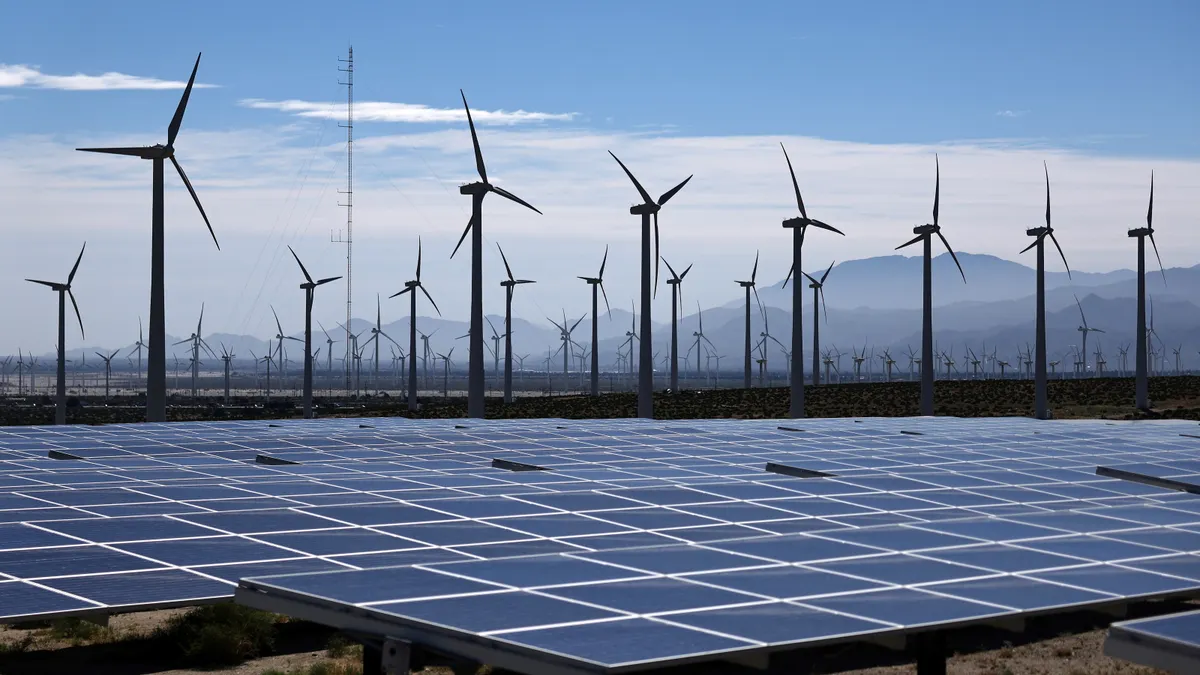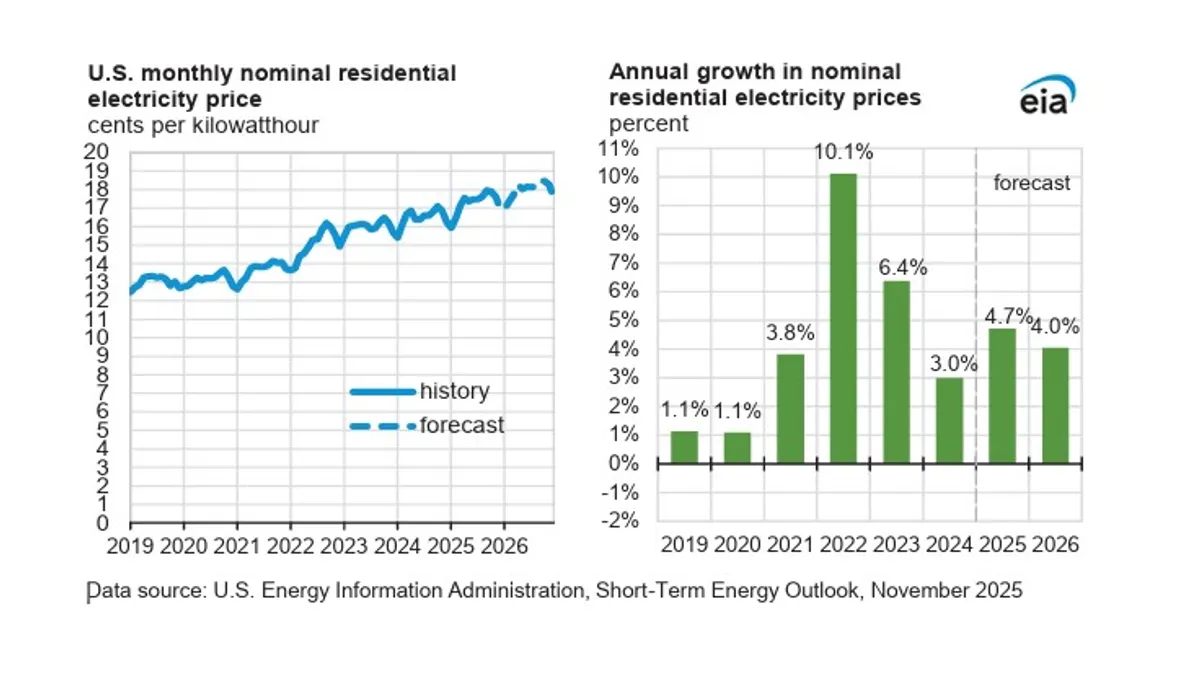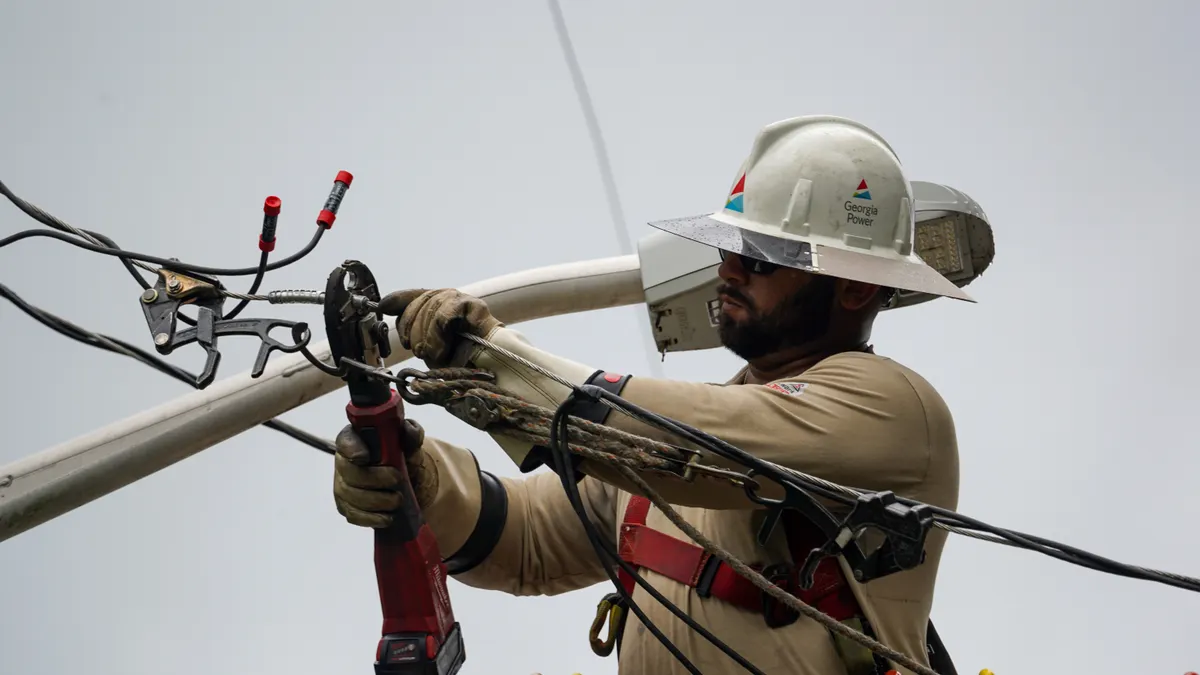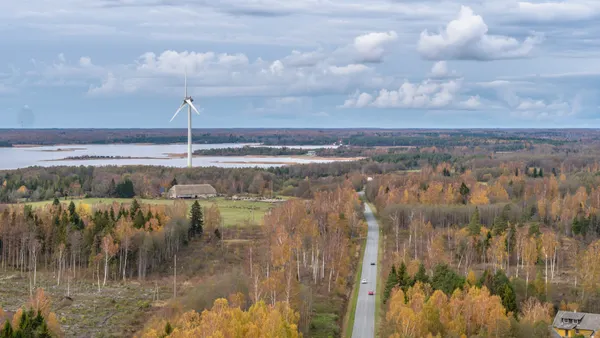Dive Brief:
- Two European energy developers are teaming up on a U.S. joint venture that aims to deploy 4 GW of wind, solar and energy storage capacity across the western half of the country.
- The partnership between the U.S. arm of Spanish renewables developer Elmya Energy and London-based Altantica Sustainable Infrastructure is a significant bet on continued development of renewables in the U.S. despite a presidential administration that favors fossil fuels.
- The “Elmantic” joint venture will focus on developing wind, solar and storage projects in the Electric Reliability Council of Texas and Western Electricity Coordinating Council territories, Elmya said Thursday. The venture could purchase other developers’ pipeline projects where it made sense, but “greenfield [development] is the objective,” Elmya Energy USA Head of North America Colin Mott said in an interview.
Dive Insight:
Elmantic isn’t bothered by the political whiplash on renewable energy in Washington, Mott said. Its first projects likely won’t begin producing power until close to the end of the decade.
“We’re going to keep monitoring the situation…[but] our industry has seen these ups and downs and it continues to get more competitive,” he said. “We don’t see that changing wholesale in the next five to 10 years.”
Global clean energy investment reached a record $386 billion in the first half of 2025, according to BNEF. But investment volumes declined 36% in the United States as the Trump administration imposed new restrictions on renewables development and rescinded billions in low-carbon loans and grants approved under former President Joe Biden.
In July, Trump signed a sweeping budget bill accelerating the phaseout of federal wind and solar tax credits while sharply curtailing eligibility for projects not yet under construction. The departments of Energy and the Interior have thrown up new roadblocks to wind and solar development on federal and some private lands. And late last month, the Trump administration ordered Ørsted to halt work on its 700-MW Revolution Wind project off Rhode Island and Connecticut, calling it a threat to national security.
The budget bill alone could reduce utility-scale solar deployment up to 20% by 2030 while increasing solar module costs by as much as 15%, accounting firm Cerini & Associates said in July.
A shrinking generator interconnection queue could benefit greenfield projects with longer time horizons, Mott added. Active requests in the U.S. interconnection queue declined last year for the first time in at least four years as speculative projects withdrew and federally-mandated interconnection study reforms took hold, ClearView Energy Partners said last month.
Mott expects recent policy changes to accelerate that trend.
“From an interconnection perspective, the [federal budget law] and other regulatory changes are going to cause more shakeup,” he said. As projects withdraw over siting, procurement or permitting challenges, he said, Elmantic’s greenfield projects could move up in line.
In light of recent federal policy changes, “We’re taking the position of trying to avoid federal lands if possible,” Mott said.
That’s challenging in the Western U.S., where the federal government owns vast amounts of undeveloped land. Only 20% of Nevada’s land area is in private hands, for example.
In August, Nevada’s Republican governor called on the Department of the Interior to soften its effective freeze on clean energy permitting on or near federal lands, saying it would “prevent or unnecessarily delay energy development in the state that is poised to help meet the growing energy demands of the mining industry and data centers.”
Clarification: This story has been updated to clarify Elmantic's position on U.S. renewable energy policy and the venture's development plans.














